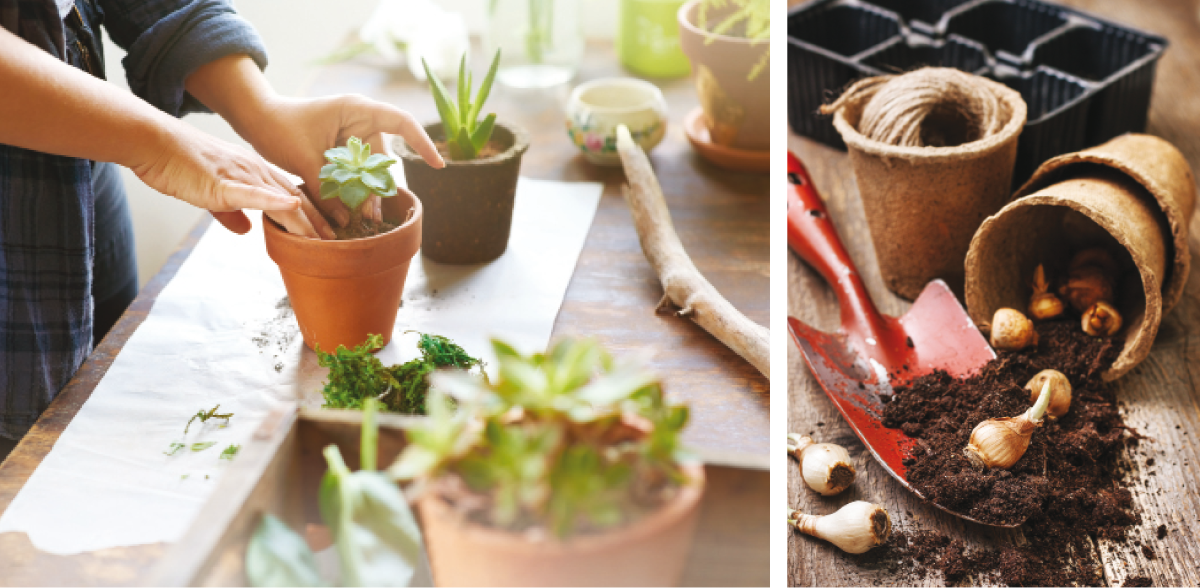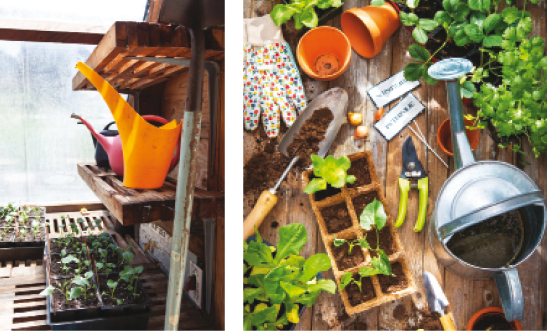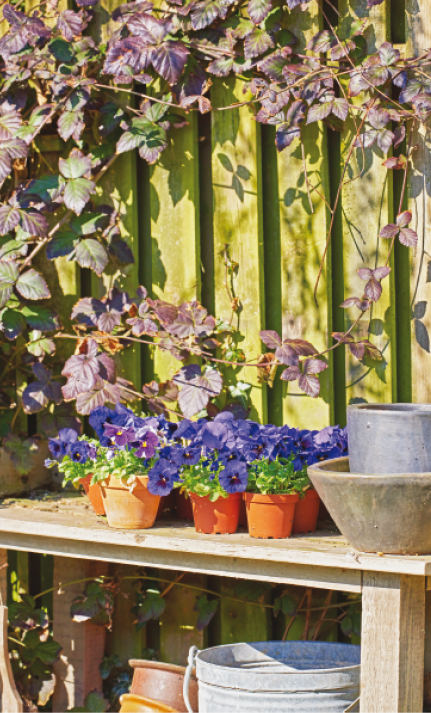Plot Your Perfect Potting Spot | Create A Stylish, Practical Workbench For Your Garden Tools


There’s nothing that kills the joy of gardening more than back pain. While you’re out in the fresh air soaking in all of nature’s goodness, your outdoor hobby can be doing its own work on your body—the bending down, the squatting, the standing back up just to bend back down again. The right workbench can help alleviate some of the back-breaking work of potting your plants, and at the same time provide an attractive space to organize and store all of your gardening tools.
Whether you’re an avid gardener and have multiple flower pots and rows of vegetables, or you lack a green thumb but love to scatter a few pots of annuals around your yard to give it some color, you still need a backstage area for your show. Workbenches for potting plants (commonly called “potting benches”) have been around for centuries. From a simple table with a couple of shelves, to elaborate and winsome designs that can reflect your love for gardening, these benches can prove both functional and decorative.
 While you may have grown accustomed to squatting on the ground or just using a picnic table, your patio furniture, or maybe even the porch steps to start seeds or transfer young plants to larger pots, having a central, tidy place for your potting can keep cleanup simple and prevent multiple trips in search of the right tools. Just as mechanics have tool benches, chefs have their countertops, and even parents have baby changing tables, gardeners can do their jobs better when they have all their items well within reach.
While you may have grown accustomed to squatting on the ground or just using a picnic table, your patio furniture, or maybe even the porch steps to start seeds or transfer young plants to larger pots, having a central, tidy place for your potting can keep cleanup simple and prevent multiple trips in search of the right tools. Just as mechanics have tool benches, chefs have their countertops, and even parents have baby changing tables, gardeners can do their jobs better when they have all their items well within reach.
The first step is choosing a spot for your workspace. Indoors or outdoors? A garage, shed, greenhouse, or covered porch or patio could keep your tools out of the weather and keep you from baking in the hot sun. But there are benefits to placing a potting bench outside, too—no need to sweep up any fallen potting soil, and if you can place it near a faucet or within easy reach of a garden hose, you can have an instant spot for watering your plants and washing off your fresh vegetables (more on that later). Another reason to choose the open air is to add an attractive design element to your outdoor space. Your bench could serve as a showcase for some of your most thriving varieties, becoming the talk of the garden. Plus, you could have additional space to use when hosting a dinner party, to hold drinks and food. But if you don’t have space inside and don’t want a potting area out in the open, perhaps you could compromise by propping a potting bench outdoors against your home exterior, shed, or garage walls, or beside a tall fence, and installing a simple awning overhead.
No matter where you decide to place your bench, you will need one that will accommodate all of your needs—a place to hang your tools, a flat surface for doing the work, and plenty of storage space for potting soil and for pots awaiting their inhabitants.
If you’re a devoted gardener with many tools, a long bench with a tall hutch and multiple shelves, drawers, a sink, a towel rod, and maybe even drop-leaves on each end for those larger jobs can prove useful. Or maybe your level of gardening isn’t quite so involved, and a small table or desk would work. In any case, there is potential for creativity to shine through. You can shop for the perfect bench at your local home and garden store or you can order plans to build your own.
The upcycling trend has certainly entered the world of gardening. While you can use chicken wire, pegboard or lattice for bench backings to hang your tools above the table space, try hanging your tools on a brightly painted chain-link gate, on a section of white picket fencing, on an old headboard, or along shelves of reclaimed wood mounted on salvaged doors, windows or dresser mirrors. Some furniture pieces can be converted into full potting benches: think entertainment centers, kitchen islands, bathroom vanities, desks with hutches, microwave carts, buffet tables, or beverage carts.
 There are a few things you can do to your table space to make it more practical for potting. Many manufactured potting benches will come with slats of wood, with spaces in between so dirt can fall easily to the ground or can be brushed off (don’t forget to add a small hand broom to your tool collection). If building your own potting bench, you can drill a series of ping pong-sized holes in the workspace. If you want to catch and reuse the dirt, place a dishpan under the holes.
There are a few things you can do to your table space to make it more practical for potting. Many manufactured potting benches will come with slats of wood, with spaces in between so dirt can fall easily to the ground or can be brushed off (don’t forget to add a small hand broom to your tool collection). If building your own potting bench, you can drill a series of ping pong-sized holes in the workspace. If you want to catch and reuse the dirt, place a dishpan under the holes.
A popular addition to any potting bench is a washing station. It can be as simple as using an old basin that you can fill using the garden hose or installing an old sink with a bucket underneath to catch the water. Connecting your hose to an old hand water pump on your bench could add rustic style. For the easy and practical, home and garden stores have started selling outdoor sink stations that can be installed right at your outdoor faucet. You can build a potting bench around this, or at least place your potting bench beside it.
Below the bench, make sure you have allowed plenty of space to store those large items—bags of potting soil, fertilizers and watering cans. If you want to add some style, consider putting a decorative curtain around the bottom portion of the bench.
Finally, while using a workbench is friendly on your back, don’t forget to keep a stool nearby, too. A simple wooden kitchen stool would work, but if you want to up your outdoor style, add an old tractor seat.
Fall is the best time of the year for a gardener to get organized. Take this season to sort out the tools you didn’t use over the spring or summer months, and repair or throw away the broken ones. Then plan that perfect workspace that will keep them all handy and tidy. A beautiful potting bench could become your favorite place to go to work.






